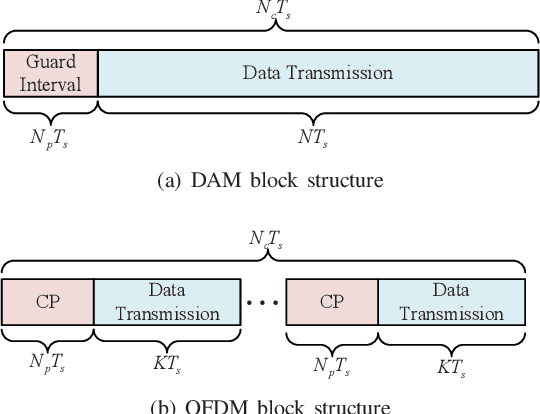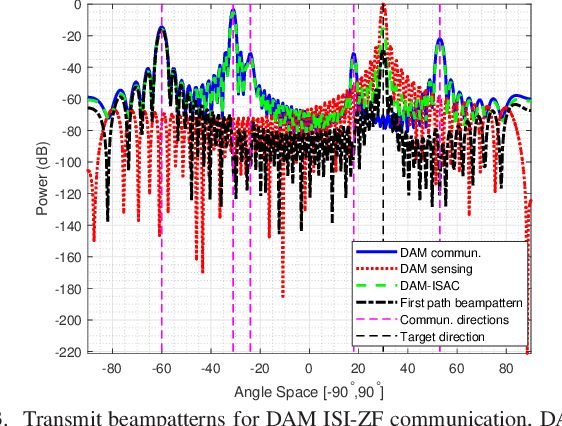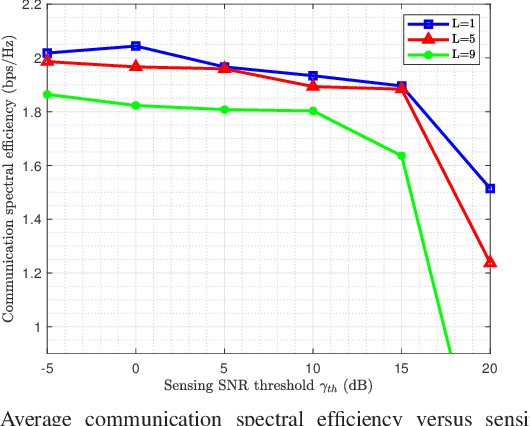Integrated Sensing and Communication with Delay Alignment Modulation
Paper and Code
Jun 08, 2022



Delay alignment modulation (DAM) has been recently proposed to enable inter-symbol interference (ISI)-free single-carrier (SC) communication without relying on sophisticated channel equalization. The key idea of DAM is to pre-introduce deliberate symbol delays at the transmitter side, so that all multi-path signal components may arrive at the receiver simultaneously and be superimposed constructively, rather than causing the detrimental ISI. Compared to the classic orthogonal frequency division multiplexing (OFDM) transmission, DAM has several appealing advantages, including low peak-to-average-power ratio (PAPR) and high tolerance for Doppler frequency shift, which makes DAM also appealing for radar sensing. Therefore, in this paper, DAM is investigated for the emerging integrated sensing and communication (ISAC) setup. We first derive the output signal-to-noise ratios (SNRs) for ISI-free communication and radar sensing, respectively, and then propose an efficient beamforming design for DAM-ISAC to maximize the communication SNR while guaranteeing the sensing performance. The comparison analysis of DAM versus OFDM for ISAC is developed, and it is revealed that DAM enables higher sensing SNR and larger Doppler frequency estimation. Simulation results are provided to show the great potential of DAM for ISAC
 Add to Chrome
Add to Chrome Add to Firefox
Add to Firefox Add to Edge
Add to Edge